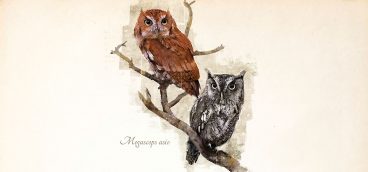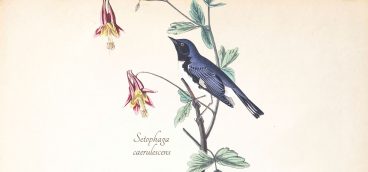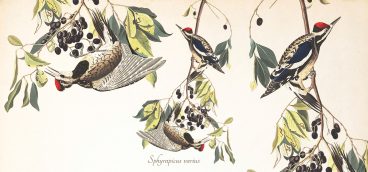Death in the Back Yard

I had been an outdoors guy all my life, until Donna Rae found “our dream house” in the city of Sharon in 2006. The compromise was that, for a place in town, this property had a bit of wild land and some wildlife: dozens of squirrels, occasional deer, raccoons, skunks, and—some years—hawks roosting in the tall oak and maple treetops.
Our Garden Room looks out on the back yard and on our birdfeeders close by the house. Trimmed ornamental shrubs thrive nearby and provide low-to-the-ground cover for the many birds we attract with our black sunflower seeds—cardinals, juncos, chickadees, goldfinches, sparrows, mourning doves, tufted titmice, and more. The sturdy glass walls of the Garden Room, locked up tight and electronically secured, run down to the floor and allow our two cats to lie there all afternoon, stare at the feeders, and dream of mayhem.
Beyond the shrubs lies a small space of back yard lawn, maybe 12 feet wide, which I will forever now call “the killing ground.” Past that is a 10-foot-high hedge, which acts as a staging area for birds approaching the feeders. Cardinals, juncos, and doves like to fly partway in and hang for a while there before committing the leap to the feeders. Other birds, such as finches, sparrows, and titmice, fly straight in without fear.
Past the high hedges grow the huge, broad-leafed rhododendrons and further still lies the majestic hemlock grove. These provide year-round greenery, even in the solemn, grave-like, bare-ground winter. Then the property drops down past the koi pond into a large abandoned rock quarry where deer sometimes roam and where my sacred acre of old hardwoods in the city grows.
I gain satisfaction from watching wildlife in my tiny woods in town, even if some days, it’s only the songbirds. I guess bird-watching is a delicate pastime compared to scaling mountains and bass-fishing in the fast-current river, but it’s wildlife, right, and I’m a student of that. I keep bird books in the Garden Room and learn to identify the creatures and their habits and habitat. I enjoy it, and so do the cats. And I’m providing a service by helping out wild birds during the lean feeding times of mid-winter. Right? But all that changed the day I witnessed murder in my back yard.
I had glanced at the feeders an hour before, on a cold day with fresh snowfall down, ideal for attracting birds. Twelve to 15 birds of half a dozen species worked the ground and the feeders, and all was well. But an hour later I stopped back and the station was deserted. Then I noticed a medium-sized gray bird down on the ground under the staging hedges. It might be a mourning dove, I thought, but no, it was a little too large. It turned, and that’s when I saw the curve of its iron beak and the glint of its angry eye.
It was a sharp-shinned hawk, almost identical to a Cooper’s Hawk, but one-third smaller. Under its talons suffered a small junco, still thrashing but not for long. A few feet away lay the signs of quick violence in the snow and four drops of blood on the ground. After one minute, the hawk grabbed up its prey and took off in a soaring flight among the tall branches. The bird feeder scene and its surroundings lay deserted for the next four hours.
That evening the birds returned, and all became normal again. I looked into my Sibley Bird Guide. “Sharp-shinned hawk,” it said: “Nests in mature forests. Solitary. Often hunts around houses and bird feeders.” Yikes, I thought. Was I responsible for this killing? If so, is that necessarily an evil thing, since songbirds are the natural prey of hawks? Could you make a case that this event was just an extension of “feeding the birds,” only this time the bird that was fed was the hawk? But—and here’s the crux—did I create an artificial environment, gathering too many birds in one place and thereby making it too easy for hawks to find abundant prey and kill them? And will the hawk return unnaturally to this spot where killing is so easy? If so, what should I do about it?
I’ll keep a close watch the next couple of weeks. This was the first time I’d seen a hawk take a songbird off my feeding area, and I’ve been putting out sunflower seeds for years. But I think I need to shut the feeders down.





